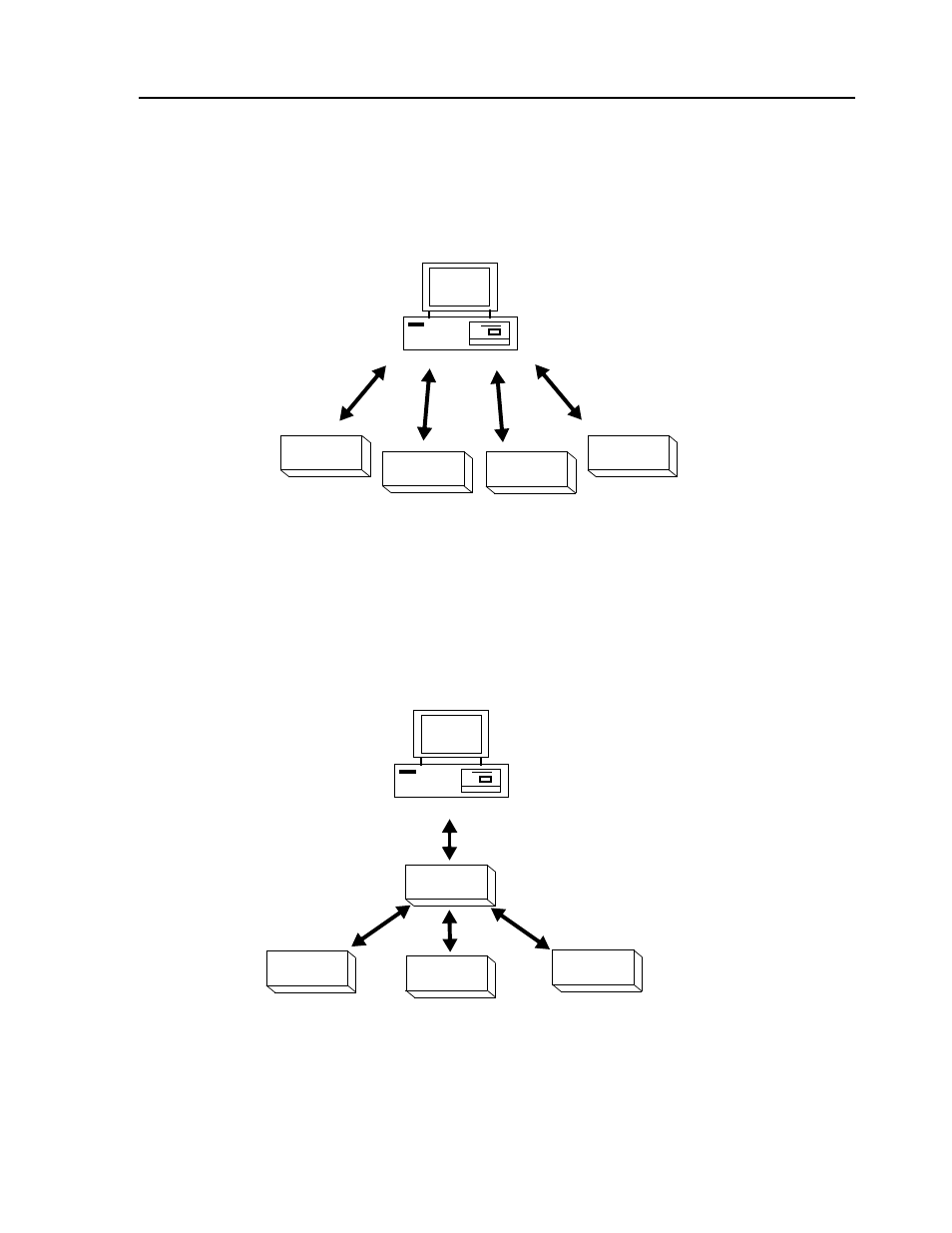Global vs. local operation – Yaskawa LEGEND-MC User Manual
Page 51

41
LEGEND-MC User’s Manual
Global vs. Local Operation
Each LEGEND-MC controls one axis of motion, referred to as A or X. The host computer can
communicate directly with any LEGEND-MC via an Ethernet or RS-232 connection. When the host
computer is directly communicating with any LEGEND-MC, all commands refer to the first axis as A or
X. Direct communication with the LEGEND-MC is known as “local operation”. The concept of Local
and Global Operation also applies to application programming.
The LEGEND-MC supports Yaskawa’s control system. This allows up to four LEGEND-MC controllers
to be connected together as a single virtual axis controller. In this system, one of the controllers is
designated as the master. The master can receive commands from the host computer that apply to all of
the axes in the system.
Here is a simple way to view Local and Global Operation; when the host communicates with a slave
controller, it considers the slave as a 1 axis controller. When the host communicates with a master, it
considers the master as a multi-axis controller. Similarly, an application program residing in a slave
controller deals only with 1 motor as A or X. An application program in a master deals with all motors
referenced A through H.
The controllers may operate under both Local and Global Mode. In general, operating in Global Mode
simplifies controlling the entire system. However, Local Mode operation is necessary in some situations;
using Local Mode for setup and testing is useful since this isolates the controller. Specific modes of
motion require operation in Local Mode. Also, each controller can have a program including the slave
controllers. When a slave controller has a program, this program would always operate in Local Mode.
LEGEND-MC
LEGEND-MC
X Axis
LEGEND-MC
X Axis
LEGEND-MC
X Axis
Host Computer
Local Operation
X Axis
Ethernet or RS 232
LEGEND-MC
Y Axis
LEGEND-MC
Z Axis
LEGEND-MC
X Axis
LEGEND-MC
W Axis
Host Computer
Global Operation
Ethernet
